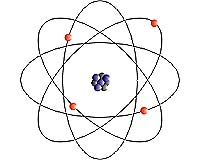 |
Redondo Beach CA (SPX) Jun 01, 2010 Northrop Grumman has set a new electronics performance record with a Terahertz Monolithic Integrated Circuit (TMIC) operating at 0.67 terahertz (THz), or 0.67 trillion cycles per second. Developed at the company's Simon Ramo Microelectronics Center under a contract with the Defense Advanced Research Projects Agency's (DARPA) Terahertz Electronics program, this new performance record more than doubles the frequency of the fastest reported integrated circuit. Dr. William Deal, THz Electronics program manager for Northrop Grumman's Aerospace Systems sector, detailed the performance of this new TMIC amplifier at the Institute of Electrical and Electronics Engineers' (IEEE) International Microwave Symposium being held in Anaheim, Calif. He told fellow scientists that the TMIC amplifier is the first of its kind operating at 670 GHz. "A variety of applications exist at these frequencies. These devices could double the bandwidth, or information carrying capacity, for future military communications networks. TMIC amplifiers will enable more sensitive radar and produce sensors with highly improved resolution," said Deal. The goal of DARPA's Terahertz Electronics program is to develop the critical device and integration technologies necessary to realize compact, high-performance, electronic circuits that operate at center frequencies exceeding 1.0 THz. Managed by DARPA's Microsystems Technology Office, the program focuses on two areas - terahertz high-power amplifier modules, and terahertz transistor electronics. "The success of the THz Electronics program will lead to revolutionary applications such as THz imaging systems, sub-mm-wave ultra-wideband ultra-high-capacity communication links, and sub-mm-wave single-chip widely-tunable synthesizers for explosive detection spectroscopy," according to Dr. John Albrecht, THz Electronics program manager for DARPA. A transistor amplifier magnifies input signals to yield a significantly larger output signal. In 2007, Northrop Grumman set a new world record for transistor speed with an ultra-fast device to provide much higher frequency and bandwidth capabilities for future military communications, radar and intelligence applications. The company produced and demonstrated an indium phosphide-based High Electron Mobility Transistor (InP HEMT) with a maximum frequency of operation of more than 1,000 gigahertz, or greater than one terahertz.
Share This Article With Planet Earth
Related Links technical paper Computer Chip Architecture, Technology and Manufacture Nano Technology News From SpaceMart.com
 Small miracle as Australian experts make atom-sized switch
Small miracle as Australian experts make atom-sized switchSydney (AFP) May 24, 2010 Australian scientists Monday unveiled the world's smallest electronic switch measuring just a few atoms, which will shrink microchips and revolutionise computing speeds. The seven-atom transistor, measuring four-billionths of a metre and embedded in a single silicone crystal, is the first step in a "quantum computer" which will make calculations millions of times faster than existing devices ... read more |
|
| The content herein, unless otherwise known to be public domain, are Copyright 1995-2010 - SpaceDaily. AFP and UPI Wire Stories are copyright Agence France-Presse and United Press International. ESA Portal Reports are copyright European Space Agency. All NASA sourced material is public domain. Additional copyrights may apply in whole or part to other bona fide parties. Advertising does not imply endorsement,agreement or approval of any opinions, statements or information provided by SpaceDaily on any Web page published or hosted by SpaceDaily. Privacy Statement |